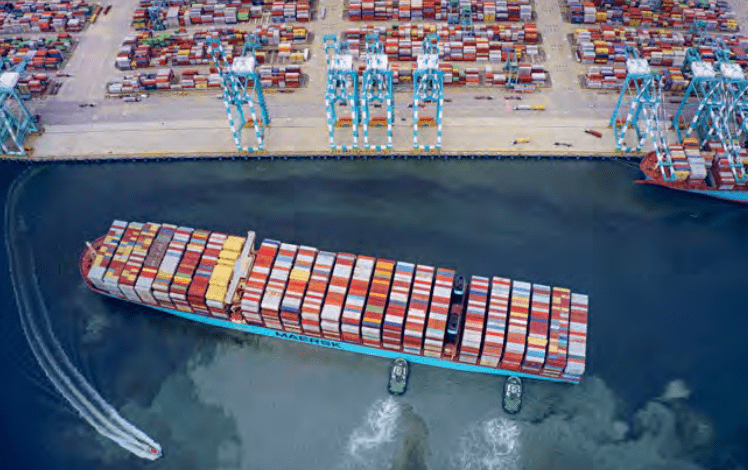Maersk: global container demand down 1.2%

Global container demand fell 1.2% in the first quarter, down from 7.7% growth in 2021, according to Maersk.
At the same time, world port throughput increased 3.1% (Drewry) and world air cargo volumes (CTK) increased 2.9 percent.
Maersk is a Danish shipping company, active in the maritime and land transport of goods and associated services, such as supply chain management and port operations.
The company was also the world’s largest container shipping line and ship operator from 1996 to 2021.
According to Maersk, trade flow levels stalled at high levels in the United States, where consumption of technology and retail goods had been supported during the Covid-19 pandemic.
Notably, North American container imports from the Far East rose just 0.5% in the first quarter.
European consumer confidence remained high in early 2022 (before falling sharply in March following the Russian invasion of Ukraine) and unmet demand due to capacity shortages in 2021 further supported import volumes.
Consequently, European container imports from the Far East increased by 1.4% in the first quarter.
The supply side of the logistics industry continued to be affected by the pandemic and capacity shortages.
Maersk
Container availability and air capacity remained tight, while waiting times for ships outside ports remained long due to bottlenecks in land transport and storage.
According to Clarkson, port congestion decreased slightly from its peaks in the United States in the first quarter, while it increased further in Europe and China.
This continued to cause shortages and challenges in supply chain management services and kept fees high. The invasion of Ukraine likely added further strains on supply chain networks.
The air cargo industry remained capacity constrained during the first quarter, although capacity in the commercial airline industry was 8.9% higher than a year earlier (February 2022 vs. February 2021), it was still 5.6% below level. February 2019.
On the supply side, supplier lead times remain long and there is little visibility of when capacity constraints (including onshore bottlenecks in trucking and warehousing), which have been the key driver of rising freight rates in the short term.
In addition, the Russian invasion of Ukraine also adds to supply uncertainty due to sanctions and supplier network restrictions.
![]()

